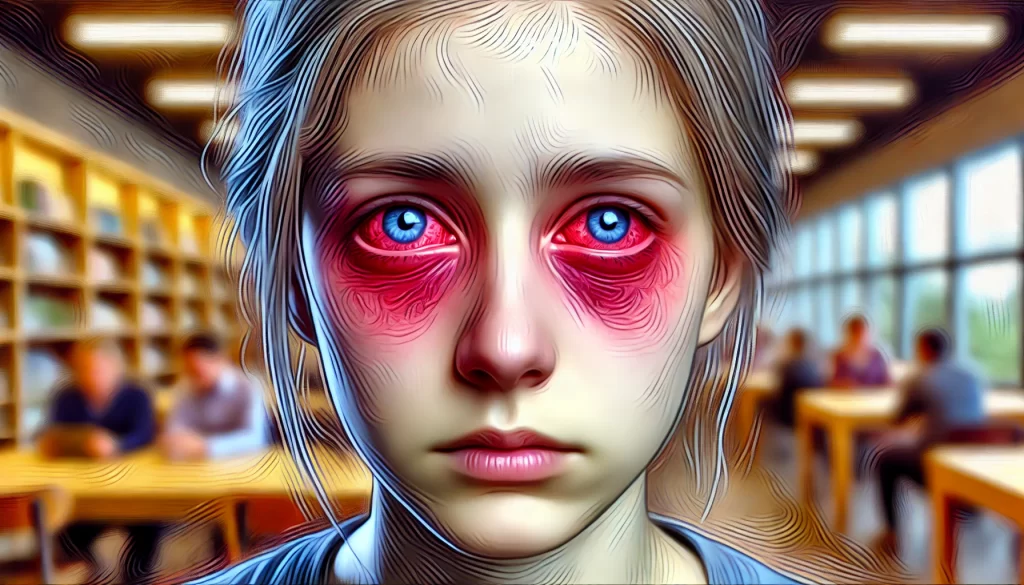Overview of Conjunctivitis
Conjunctivitis (commonly referred to as “red eye”) is an inflammation of the conjunctiva, the thin layer of tissue that lines the inside of the eyelid and covers the white part of the eye. It is a common condition that can affect one or both eyes and is typically characterized by redness, discomfort, and discharge. While conjunctivitis can be irritating, it often resolves on its own without the need for extensive treatment.
Symptoms of Conjunctivitis
he symptoms of conjunctivitis can vary depending on the cause but generally include:
- Redness in one or both eyes
- Itching and irritation of the eyes
- Watery discharge or tearing
- A gritty or burning sensation in the eyes
- Swollen eyelids
- Sticky pus or crusting around the eyelashes, especially after sleep
Common Causes of Conjunctivitis
There are three main types of conjunctivitis, each with different causes:
Infective Conjunctivitis:
Caused by bacteria or viruses and is highly contagious. Symptoms often include redness, a sticky discharge, and a gritty feeling in the eyes.Allergic Conjunctivitis:
Triggered by allergens such as pollen, dust mites, or pet dander. Symptoms include redness, itchiness, and tearing, often accompanied by other allergic reactions like sneezing.Irritant Conjunctivitis:
Caused by contact with an irritant such as chlorine from swimming pools, pollution, smoke, or even a loose eyelash. Symptoms tend to subside once the irritant is removed.
Treating and Preventing Conjunctivitis
Do:
- Gently Clean the Eyes: Boil water, let it cool, and use a clean cotton wool pad to gently wipe away crusts from the eyelashes (use a separate pad for each eye).
- Apply a Cold Compress: Place a cold, damp towel over your eyes for a few minutes to ease discomfort.
- Maintain Good Hygiene: Wash your hands regularly, especially after touching your eyes.
- Use Lubricant Eye Drops: Available at pharmacies, these can help soothe irritation.
Don’t:
- Avoid Rubbing the Eyes: This can exacerbate symptoms and spread infection.
- Do Not Wear Contact Lenses: Until symptoms have completely cleared up.
- Don’t Reuse Old Lenses: Discard old lenses after an infection to avoid reinfection.
- Avoid Sharing Personal Items: Such as pillows or towels.
When to Seek Medical Advice
While most cases of conjunctivitis are mild and resolve within a couple of weeks, it is important to seek medical advice if:
- Symptoms persist beyond 2 weeks.
- You experience pain, light sensitivity, changes in vision, or severe redness in one or both eyes.
- A baby under 28 days old develops red eyes.
- You wear contact lenses and develop spots on your eyelids.
If any of these apply, consult a pharmacist, optometrist, or your healthcare provider.
Treatment Options
1. Antibiotics for Bacterial Conjunctivitis:
Antibiotics may be prescribed if your conjunctivitis is caused by bacteria. These typically come in the form of eye drops or ointments.
2. Antihistamines for Allergic Conjunctivitis:
Antihistamines can alleviate symptoms of allergic conjunctivitis. It is best to avoid exposure to the triggering allergens whenever possible.
3. Irritant Conjunctivitis:
This type resolves once the irritant is removed.
4. Special Considerations for STIs:
Certain sexually transmitted infections (STIs) can cause conjunctivitis and may require longer treatment courses.
Self-Care and Precautions
Conjunctivitis can spread easily, especially if caused by bacteria or viruses. To prevent spreading it:
- Practice good hygiene by washing hands frequently.
- Avoid touching or rubbing the eyes.
- Dispose of tissues and wash linens that come in contact with your eyes.
- Do not share eye makeup, towels, or contact lenses with others.







